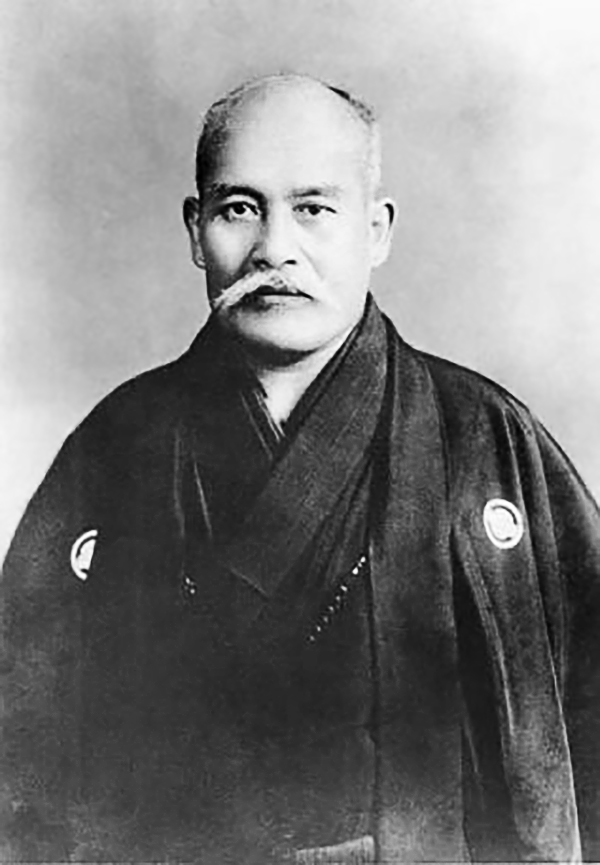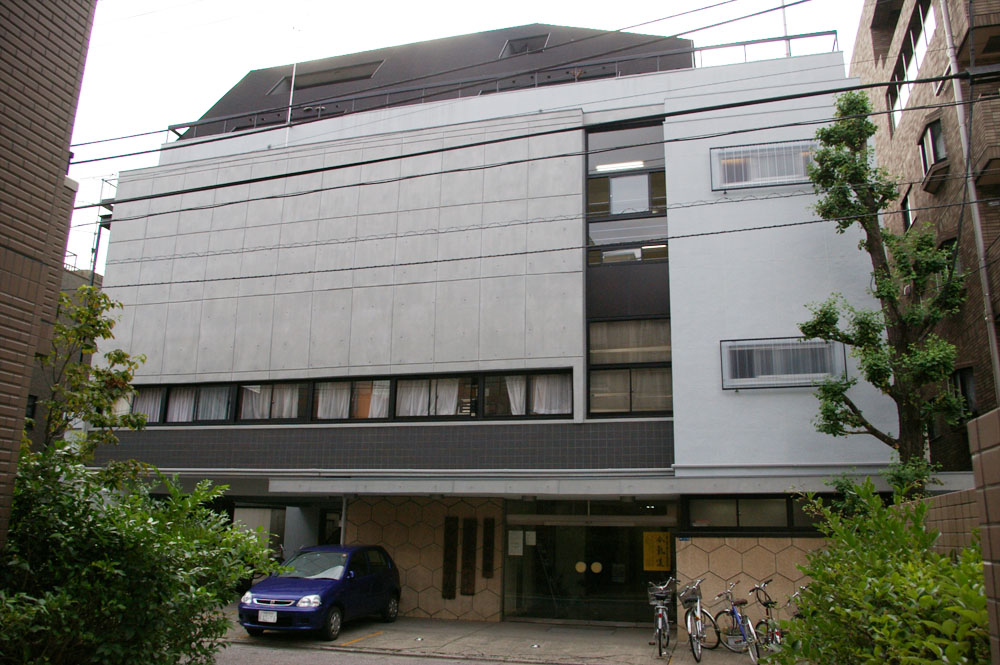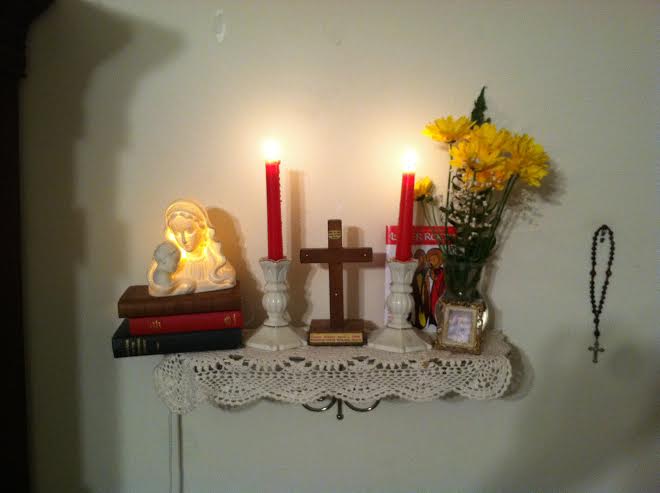|
Ki-Aikido
or is a Japanese Gendai budō, gendai budo (contemporary martial art). It is one of the arts derived from the original Aikido, appearing after the Morihei Ueshiba, founder's death in 1969. Ki Aikido started in 1971 with the creation of the Ki No Kenkyūkai (known in English as Ki Society) by Koichi Tohei, while he was still Chief Instructor at the Aikikai Hombu Dojo. Eventually Tohei split from the Aikikai in 1974 to focus full time on his new organization. This martial art focuses on mind and body coordination and is based on aikido techniques and Shinshin-tōitsu-dō, Japanese yoga and promote non-violent conflict solving and self-development. Tohei was taught Shinshin-tōitsu-dō (also known as 'Japanese yoga') by Tempu Nakamura. He felt that Tempu's teaching and explanation made clear what Morihei Ueshiba was able to do in his aikido (particularly the idea that the mind moves the body). As a result he started bringing in exercises from Shinshin-tōitsu-dō, such as 'unbendable ... [...More Info...] [...Related Items...] OR: [Wikipedia] [Google] [Baidu] |
Koichi Tohei
(20 January 1920 – 19 May 2011) was a 10th Dan aikidoka and founder of the Ki Society and its style of aikido, officially Shin Shin Toitsu Aikido (literally "aikido with mind and body unified"), but commonly known as Ki-Aikido. Aikido Koichi Tohei was born 1920 in Shitaya ward (下谷区), presently Taitō, in Tokyo and graduated from the Economics Department of Keio University. As a boy he was sickly and frail, leading his father to recommend Tohei for judo studies. He trained hard and his body prospered, but soon after he began his pre-college studies at Keio University, he developed a case of pleurisy. This forced Tohei to take a year off. Tohei was distressed at the thought of losing his newfound strength of body and his means of training it, so he decided to replace his judo studies with Zen meditation and misogi exercises, learned at the Ichikukai Dojo in Tokyo. As with his judo studies, Tohei entered the training of the mind with fervor and soon excelled despi ... [...More Info...] [...Related Items...] OR: [Wikipedia] [Google] [Baidu] |
Tempu Nakamura
was a Japanese martial arts, Japanese martial artist and founder of Japanese yoga. He was the first to bring yoga to Japan and founded his own art called , and taught it at Tempu-Kai that he established. Biography Early life and family background Born in Tokyo, Japan, his original name was Saburō (). He was the son of Sukeoki Nakamura (中村祐興 1829-1909) of Fukuoka Prefecture and Teu Nakamura (中村テウ 1858-1928) of Tokyo, known as Edo at the time. His father introduced the use of paper money in Japan when he served as the bureau director of the Japanese Ministry of Finance (Japan), Ministry of Finance. Tempū Nakamura later moved to Fukuoka (福岡市, Fukuoka Cities of Japan, City), Fukuoka Prefecture (福岡県), to live with a relative. Once there, he took private lessons from an Englishman and enrolled in the Shuyukan Senior High School, Shūyūkan (, now Fukuoka Prefectural Shuyukan Senior High School in Sawara-ku, Fukuoka, Sawara-ku) school where English wa ... [...More Info...] [...Related Items...] OR: [Wikipedia] [Google] [Baidu] |
Gendai Budō
, or are both terms referring to modern Japanese martial arts, which were established after the Meiji Restoration (1866–1869). Kobudō or koryū are the opposite of these terms referring to ancient martial arts established before the Meiji Restoration. Scope and tradition Any martial art created after the Meiji Restoration of 1868 is Gendai Budō. Koryō Budō are schools of budō that predate 1868. Some examples of Gendai budō are aikido, fuji ryu Goshendo ju-jitsu, gendai goshin ju jitsu, judo, karate, kūdō and shorinji kempo. The Japanese art of sumo is often defined as a gendai budō. This definition is incorrect as sumo is an ancient art that has attained popularity and media coverage in the modern era. Gendai budō have origins in '' koryū'', the traditional Japanese martial arts. For example, Kano Jigoro (嘉納 治五郎 ''Kanō Jigorō'', 1860–1938) founded judo in part as an attempt to systematize the myriad traditions of ju-jitsu which existed at th ... [...More Info...] [...Related Items...] OR: [Wikipedia] [Google] [Baidu] |
Aikido
Aikido ( , , , ) is a gendai budō, modern Japanese martial art which is split into many different styles including Iwama Ryu, Iwama Shin Shin Aiki Shuren Kai, Shodokan Aikido, Yoshinkan, Renshinkai, Aikikai, and Ki Aikido. Aikido is now practiced in around 140 countries. It was originally developed by Morihei Ueshiba, as a synthesis of his martial studies, philosophy and religious beliefs. Ueshiba's goal was to create an art which practitioners could use to defend themselves against attacks, while also protecting the attackers from injury. Aikido is often translated as "the way of unifying (with) Qi, life energy" or as "the way of harmonious spirit". According to the founder's philosophy, the primary goal in the practice of aikido is to overcome oneself instead of cultivating violence or aggressiveness. Morihei Ueshiba used the phrase to refer to this principle. Aikido's fundamental principles include: (entering), , (breathing control), (triangular principle), and (turn ... [...More Info...] [...Related Items...] OR: [Wikipedia] [Google] [Baidu] |
Morihei Ueshiba
was a Japanese martial artist and founder of the Japanese martial art, martial art of aikido. He is often referred to as "the founder" or , "Great Teacher". The son of a landowner from Tanabe, Wakayama, Tanabe, Ueshiba studied a number of martial arts in his youth, and served in the Imperial Japanese Army, Japanese Army during the Russo-Japanese War. After being discharged in 1907, he moved to Hokkaido as the head of a pioneer settlement; here he met and studied with Takeda Sōkaku, the headmaster of Daitō-ryū Aiki-jūjutsu. On leaving Hokkaido in 1919, Ueshiba joined the Ōmoto-kyō movement, a Shinto sect, in Ayabe, Kyoto, Ayabe, where he served as a martial arts instructor and opened his first dojo. He accompanied the head of the Ōmoto-kyō group, Onisaburo Deguchi, on an expedition to Mongolia in 1924, where they were captured by Chinese troops and returned to Japan. The following year, he had a profound spiritual experience, stating that, "a golden spirit sprang up f ... [...More Info...] [...Related Items...] OR: [Wikipedia] [Google] [Baidu] |
Aikikai Hombu Dojo
The Aikikai is the original school of Aikido. It is centered on the Aikikai#Aikikai Foundation, Aikikai Foundation in Japan, and its figurehead is the Aikikai#Doshu, Doshu (the family heir of the founder of Aikido). It is represented globally through the Aikikai#International Aikido Federation, International Aikido Federation. Aikikai Foundation The is the original aikido organization. It has been an incorporated entity in Japan since 1940 under the name , then re-registered under the name "Aikikai" after the ban on Aikido practice was lifted by the GHQ in 1948. It is headed by the doshu, the living successor of the founder of aikido. The Aikikai Foundation operates Aikikai#Hombu dojo, Hombu dojo, which is also named Aikido World Headquarters. It is sometimes called the Aikikai Hombu to distinguish it from the headquarters of later aikido organisations. It is located in Tokyo. The term "Hombu" may sometimes be Metonym, used loosely to refer to the upper echelons of instructo ... [...More Info...] [...Related Items...] OR: [Wikipedia] [Google] [Baidu] |
Shinshin-tōitsu-dō
was founded by Nakamura Tempu and is also known as Japanese Yoga. It is a study of the principles of nature and how they can be refined to help us realize the truths of nature and our full potentials. History Nakamura Tempu created his Japanese Yoga from a variation of Raja Yoga and Karma Yoga, with an emphasis on the latter, which he learned from his Indian teacher Kaliapa (also spelled Cariapa and Kariappa), who took him to Gorkhe, in eastern Nepal. Goal and means The goal of this ''way of mind and body unification'' is the free use of our mind and bodies and realize our true nature as human beings. We must be able to use our most fundamental tools (the mind and body) naturally, effectively and in coordination of each other to artistically express ourselves in life. Three elements that are key in this process are: #Training to reveal the nature of positivity. #Reformation of the subconscious. #Regulating and maintaining a balanced condition in the nervous system. Principles ... [...More Info...] [...Related Items...] OR: [Wikipedia] [Google] [Baidu] |
Gendai Budo
may refer to: * Gendai, a modern aesthetic movement in haiku * Gendai budō, Japanese martial arts established after the 1860s * GameSalad (company), formerly Gendai Games, an American computer software company * ''Shūkan Gendai is a general-interest weekly magazine published by Kodansha in Tokyo, Japan. History and profile ''Shūkan Gendai'' was started in 1959. The magazine has its headquarters in Tokyo Tokyo, officially the Tokyo Metropolis, is the capital o ...'', a Japanese magazine See also * Museum of Contemporary Art, Tokyo {{disambig ... [...More Info...] [...Related Items...] OR: [Wikipedia] [Google] [Baidu] |
Meditation
Meditation is a practice in which an individual uses a technique to train attention and awareness and detach from reflexive, "discursive thinking", achieving a mentally clear and emotionally calm and stable state, while not judging the meditation process itself. Techniques are broadly classified into focused (or concentrative) and open monitoring methods. Focused methods involve attention to specific objects like breath or mantras, while open monitoring includes mindfulness and awareness of mental events. Meditation is practiced in numerous religious traditions, though it is also practised independently from any religious or spiritual influences for its health benefits. The earliest records of meditation ('' dhyana'') are found in the Upanishads, and meditation plays a salient role in the contemplative repertoire of Jainism, Buddhism and Hinduism. Meditation-like techniques are also known in Judaism, Christianity and Islam, in the context of remembrance of and prayer and dev ... [...More Info...] [...Related Items...] OR: [Wikipedia] [Google] [Baidu] |
Physical Exercise
Exercise or workout is physical activity that enhances or maintains fitness and overall health. It is performed for various reasons, including weight loss or maintenance, to aid growth and improve strength, develop muscles and the cardiovascular system, prevent injuries, hone athletic skills, improve health, or simply for enjoyment. Many people choose to exercise outdoors where they can congregate in groups, socialize, and improve well-being as well as mental health. In terms of health benefits, usually, 150 minutes of moderate-intensity exercise per week is recommended for reducing the risk of health problems. At the same time, even doing a small amount of exercise is healthier than doing none. Only doing an hour and a quarter (11 minutes/day) of exercise could reduce the risk of early death, cardiovascular disease, stroke, and cancer. Classification Physical exercises are generally grouped into three types, depending on the overall effect they have on the huma ... [...More Info...] [...Related Items...] OR: [Wikipedia] [Google] [Baidu] |
Spiritual Practice
A spiritual practice or spiritual discipline (often including spiritual exercises) is the regular or full-time performance of actions and activities undertaken for the purpose of inducing spiritual experiences and cultivating spiritual development. A common metaphor used in the spiritual traditions of the world's great religions is that of walking a path. Therefore, a spiritual practice moves a person along a path towards a goal. The goal is variously referred to as salvation, liberation or union (with God). A person who walks such a path is sometimes referred to as a wayfarer or a pilgrim. Religion Abrahamic religions Judaism Jewish spiritual practices may include prayer (including the Shema and Amidah), reciting blessings, Jewish meditation, Torah study, following dietary laws of kashrut, observing Shabbat, fasting, practices of teshuvah, giving tzedakah, and performing deeds of loving-kindness. '' Kavanah'' is the directing of the heart to achieve higher contem ... [...More Info...] [...Related Items...] OR: [Wikipedia] [Google] [Baidu] |




